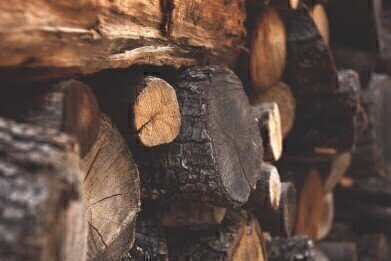Environmental Laboratory
What Role Does Wood Play in the Environment?
Oct 31 2016
With the constant clamour surrounding deforestation, carbon emissions and climate change, you would be forgiven for thinking that the use of wood (and especially the burning of it) is detrimental to the environment. However, a new study from Switzerland suggests that using wood more widely as both a building material and a source of energy could actually help reduce emissions and curb global warming.
The report looked into all stages of the life cycle of wood, from the cutting down of trees to the manufacture of goods to the recycling or combustion of the product once it is no longer useful. After evaluating the process from all angles, the report concluded that sustainable and responsible use of wood could be more environmentally friendly than other materials.
In 2013, the country of Switzerland emitted a grand total of 52.6 million tonnes of carbon dioxide (CO2). By replacing energy sources and building materials with wood, the report estimated that those emissions would fall by between 2.0 and 3.1 million tonnes, effecting a significant reduction in the country’s carbon footprint.
Wood for combustion
While research is ongoing into the value of waste materials (such as wood) as fuel feedstock is ongoing, there is another simple way it can be used to produce energy: combustion. Approximately 66.6% of the estimated reduction from the report was attributed to the use of wood in the energy industry. Using wood to heat homes and businesses instead of gas or oil was found to significantly reduce the amount of CO2 emitted during the process.
What’s more, the carbon that was released upon combustion of the wood would actually be environmentally neutral, since it would have been soaked up from the atmosphere during the wood’s lifetime.
However, burning wood is not entirely without reproach. During combustion, wood releases significant amounts of particulate matter into the air, which is a known contributing factor to poor air quality and a health risk for those who inhale it, leading to respiratory ailments and other complications. In a world where clean air is still a political objective, exacerbating the effects of particulate matter through the combustion of wood might not be a popular choice.
Wood for construction
The other third of estimated reductions can be attributed to the construction industry. Materials such as aluminium, cement, plastic and steel have a high carbon footprint since they involve a heavily industrial process in their creation. By replacing these with wood, the carbon offset can be reduced.
However, the use of wood to create paper remains a concern among scientists. This is largely due to the high amounts of energy that are necessary to convert wood into paper, as well as the ongoing deforestation of certain areas to create it.
On the other hand, the digitalisation of today’s modern world means that paper documents are becoming less and less commonplace. As our documentation moves online, our need for paper becomes reduced – and at present, we’re not at a shortage for material. It should, therefore, be remembered that wood is one of the few renewable sources of energy and construction available to us.
Digital Edition
IET 34.2 March 2024
April 2024
Gas Detection - Biogas batch fermentation system for laboratory use with automatic gas analysis in real time Water/Wastewater - Upcycling sensors for sustainable nature management - Prist...
View all digital editions
Events
Apr 30 2024 Melbourne, Australia
Apr 30 2024 Birmingham, UK
May 03 2024 Seoul, South Korea
May 05 2024 Seville, Spain
May 06 2024 Minneapolis, MN, USA


















